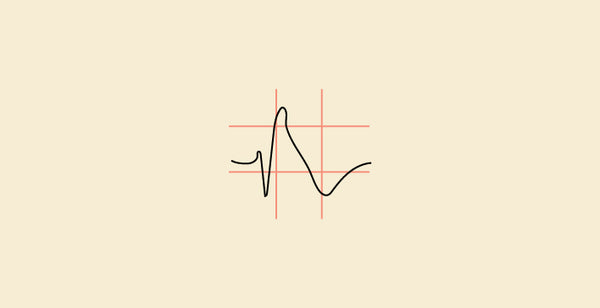Difference between Brugada Pattern vs Brugada Syndrome: Brugada Pattern and Brugada Syndrome are two separate cardiac disorders characterized by aberrant heart electrical activity. Electrocardiogram (ECG) results that exhibit specific changes in the ST segment, especially in the right precordial leads, are used to identify the Brugada Pattern. It is possible to identify this pattern in people who do not exhibit any overt symptoms or arrhythmias. Conversely, Brugada Syndrome includes clinical signs and symptoms such as palpitations, fainting, and even abrupt cardiac arrest in addition to aberrant ECG readings. Because of the elevated incidence of ventricular arrhythmias, most notably ventricular fibrillation, it is considered a potentially fatal syndrome that primarily affects young individuals with structurally normal hearts.
Difference Between Brugada Pattern and Brugada Syndrome
Brugada Syndrome comprises ECG irregularities with increased arrhythmia risk and clinical signs such as fainting, necessitating close monitoring to prevent unexpected cardiac events. Brugada Pattern denotes abnormalities in the ECG without any accompanying symptoms. The table below provides the differences between Brugada Pattern and Brugada Syndrome.
|
Feature |
Brugada Pattern |
Brugada Syndrome |
|
Definition |
ECG pattern showing characteristic ST-segment elevation in V1-V3 |
Clinical syndrome characterized by specific ECG findings and increased risk of sudden cardiac death |
|
Presentation |
ECG finding, often incidental or asymptomatic |
Symptomatic with history of syncope, palpitations, or sudden cardiac arrest |
|
Inheritance Pattern |
Not directly inherited, may be acquired due to certain medications or electrolyte abnormalities |
Autosomal dominant inheritance pattern, with familial occurrence often |
|
Risk of Complications |
Typically benign, unless associated with underlying conditions |
Increased risk of arrhythmias and sudden cardiac death, necessitating close monitoring and potential intervention |
|
Treatment |
Management of underlying causes or conditions |
Implantable cardioverter-defibrillator (ICD) placement, pharmacological therapy, and avoidance of triggers such as certain medications |
|
Prognosis |
Generally favorable, unless underlying pathology presents |
Variable, with some cases being associated with significant morbidity and mortality |
Browse The Best Scrubs Collection!
What is the Brugada Pattern?
The Brugada Pattern is a type of electrocardiogram (ECG) abnormality that is distinguished by specific changes in the ST segment, which are most commonly seen in the right precordial leads (V1-3). This pattern is sometimes identified inadvertently during standard ECG monitoring and presents as a coved-type ST-segment elevation followed by a negative T wave. It may not be linked to any symptoms or arrhythmia-related indicators.
Causes of Brugada Pattern
- Genetic Factors: In many cases, the Brugada Pattern is associated with Brugada Syndrome, which is a genetic disorder caused by mutations in genes encoding cardiac ion channels. Mutations affecting genes that encode sodium channel proteins, like SCN5A, SCN1B, and SCN3B, are frequently linked.
- Structural Heart Disease: Although less often than Brugada Syndrome, Brugada Pattern can occasionally develop in people with structural heart defects such as right ventricular dysplasia or other cardiac disorders.
- Metabolic Abnormalities: Brugada Pattern on an ECG can occasionally be caused by metabolic illnesses such as hyperthyroidism and electrolyte imbalances such as excessive potassium levels.
- Drugs and Substances: Some drugs have the ability to reveal or worsen the Brugada Pattern, especially those that interfere with cardiac ion channels. Antiarrhythmic medications and sodium channel blockers like flecainide may be among them. Furthermore, it has been documented that drugs like cocaine and alcohol can cause the Brugada Pattern.
- Fever: In people who are prone to it, a high body temperature, especially in the context of a feverish illness, may occasionally cause the Brugada Pattern to manifest.
Symptoms of Brugada Pattern
Since Brugada Pattern is an electrocardiogram (ECG) finding, it usually does not induce symptoms. On the other hand, people occasionally might have signs of underlying illnesses like Brugada Syndrome that are connected to the Brugada pattern. These signs could consist of:
- Palpitations, or the feeling of an erratic or fast heartbeat
- Feeling lightheaded or dizzy
- Experiencing syncope
- Discomfort or pain in the chest
- Breathlessness
What is Brugada Syndrome?
A rare yet potentially fatal genetic heart condition called Brugada Syndrome is characterized by aberrant cardiac electrical activity, which can result in hazardous heart rhythms and rapid cardiac arrest. The electrocardiogram (ECG) often shows a unique aberrant pattern called a "coved" or "saddleback" ST-segment elevation in the right precordial leads (V1-V3). The intermittent nature of this pattern can make diagnosis difficult. Brugada Syndrome tends to affect men more often than women and frequently runs in families, indicating a hereditary predisposition.
Causes of Brugada Syndrome
- Fever: A high fever raises the risk of harmful arrhythmias and can worsen the symptoms of Brugada Syndrome.
- Some Drugs: In sensitive people, some drugs, especially those that alter the electrical activity of the heart, might reveal or exacerbate Brugada Syndrome. These could include antidepressants, antipsychotics, some antiarrhythmic medications, and others.
- Electrolyte Imbalances: People with Brugada Syndrome may experience arrhythmias if their blood contains excessive amounts of electrolytes such as calcium, potassium, and sodium.
- Alcohol Intake: People with Brugada Syndrome have been linked to an increased risk of arrhythmias when they consume excessive amounts of alcohol.
- Sleep Deprivation: In those who are vulnerable, a lack of sleep or irregular sleep patterns may result in arrhythmias.
- Other factors: Although the exact mechanisms underlying the occurrence of arrhythmias in persons with Brugada Syndrome are not entirely completely understood, certain environmental factors or underlying cardiac diseases may also play a role.
Symptoms of Brugada Syndrome
- Fainting or Syncope: This is frequently the first obvious symptom and can come quickly and unexpectedly.
- Arrhythmia: As a result of irregular cardiac rhythms, people with Brugada Syndrome may feel as though their heart is palpitating or fluttering.
- Sudden Cardiac Arrest: Brugada Syndrome may occasionally result in abrupt cardiac arrest, especially while the patient is resting or sleeping.
- Breathlessness: Breathing problems or a sensation of being out of breath can happen, particularly after vigorous activity.
- Chest Pain or Discomfort: Although this symptom is less prevalent, certain Brugada Syndrome patients may feel chest pain or discomfort.
Shop Best Lab Coats From Here!
Similarities Between the Brugada Pattern and Brugada Syndrome
- ECG Abnormality: Specific abnormalities observed on the electrocardiogram (ECG or EKG), especially in leads V1 to V3, are what define both Brugada Pattern and Brugada Syndrome. This aberrant pattern, which is sometimes referred to as having a saddleback- or coved-type morphology, consists of an elevation of the ST segment followed by a negative T wave.
- Risk of Sudden Cardiac Death: Because of the possibility of potentially fatal arrhythmias such as ventricular fibrillation or ventricular tachycardia, people with either Brugada Pattern or Brugada Syndrome are more likely to experience sudden cardiac death.
- Genetic Component: The formation of Brugada Pattern or Brugada Syndrome is linked to mutations in specific genes, most commonly SCN5A. These diseases are based on genetics. These genetic variants have the potential to impair sodium channels' regular activity in the heart, which can result in arrhythmias and recognizable ECG abnormalities.
- Variable Presentation: Affected people may exhibit Brugada Pattern or Brugada Syndrome in a very different way. While some people may not show any symptoms at all despite the aberrant ECG readings, others may have symptoms including palpitations, cardiac arrest, or fainting.
In conclusion, the Brugada Pattern describes the ECG results, whereas Brugada Syndrome is a more general term that encompasses these ECG alterations as well as the related clinical symptoms and genetic ramifications. Though not everyone with Brugada Pattern develops Brugada Syndrome, different therapy approaches may be necessary depending on whether symptoms and other risk factors are present or not. Additional assessment is usually required to ascertain the clinical relevance and possible risk of adverse cardiac events in the case that the Brugada Pattern is identified.
Order the Best Jogger Scrub From Here!















